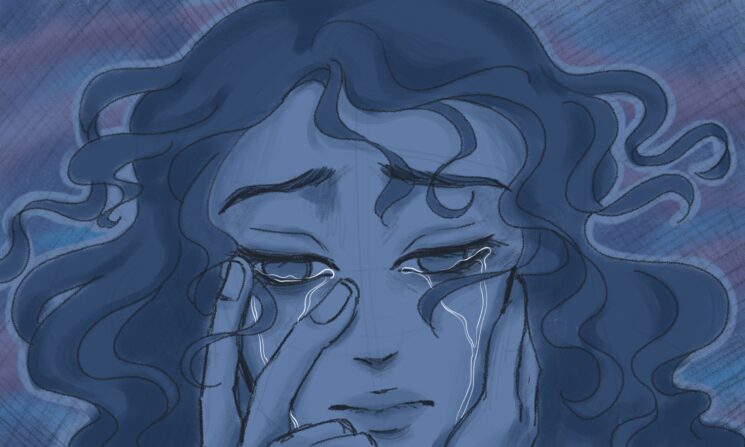
By Emily Chan
From the start of 6th grade, I became a crier. I cried throughout the school day, I cried at home, and I cried in all of my dance classes. But the kicker was, there wasn’t that much for me to be sad about. It’s because of this lack of problems in my life, that it was almost as if I was deliberately searching for ways to make myself feel worse. I basically was attached to crying and being a sad person to my identity, that was who I was. I would make self-deprecating jokes and listen to sad music just to feel something, anything. But why on Earth was I trying so hard to make myself feel horrible?
Maybe it was to gain empathy from others, or because I was dealing with post-pandemic boredom, I’m not sure. But what I am sure of, is that there are many teens out there who are just like me.
And, like me — is prevented from improving their lives and feeling happier.
As the conversation on mental illness is normalized, so has the romanticization of sadness. This beautification of feeling bad about life stems from a variety of social media platforms — one of the most prominent being Tumblr.
In the late 2010’s Tumblr was taken over by the Sad Girl aesthetic. Posts at the height of the sadness craze were predominantly made up of black and white Lana Del Rey photos captioned with a snippet of her song lyrics, to depictions of self harm. This aesthetic was further embodied with hashtags such as: #pretty when I cry, #sad girl and #depressed.
That being said, even though the Sad Girl of Tumblr has slowly fizzled away, the craving many people have for the feeling of sadness is still present today. For example, just a year ago, crying girl makeup was popularized on TikTok, a look that featured a whole lot of blush, puffy eyes and glitter in place of tears.
But this aesthetic is even more harmful than one may think. Under the bows and sparkly tears of the sad social media girl, lies a mindset that distracts people from their ambitions. In essence, the romanticization of feeling sad prevents people from feeling better and achieving their goals in life.
To begin, feeling sadness is completely natural, however it’s one thing to feel sad, and another to attach it to your identity. Along with your location, your identity is heavily influenced by the culture and media you consume. Once you identify yourself as a sad person, you begin to seek things in your daily life that confirm this identity. This hunt for evidence to back up one’s own opinions on life and themselves is called confirmation bias. Confirmation bias is a slippery slope, since it shifts your mindset to search for small things throughout the day to support your identity. If your sense of self is directly connected with sadness, you fall into a continuous cycle of searching for things to be sad about and only feeling worse at the end of the day.
That being said, supporters of the sad girl aesthetic argue that it’s comforting to feel depressed and that it makes the conversation surrounding mental health less taboo.
However, the problem with considering wallowing in shame and sadness as beautiful, is the fact that it is comfortable. Since the feeling is comfortable, people subconsciously choose it over the foreign feeling of joy.
Furthermore, romanticizing the effects of mental illness actually takes away from the mental health conversation as a whole, if anything. This is because it shifts the focus of the mental health conversation away from seeking help. To put it shortly, it promotes staying sad indefinitely, rather than getting better.
Not only does it negatively impact your perspective, but by participating in this aesthetic, you begin to foster an environment that promotes and normalizes feeling sad above everything else.
Just think, how are you supposed to persevere if you wake up to quotes that continuously affirms to you that life is incapable of getting better? How are you supposed to be motivated for the day ahead, if it’s habitual for you to search up “music to cry to” everytime you open up Spotify? And more importantly, how are you ever going to pull yourself out of your own sadness if you fill your world with a list of things to cry about daily?
It’s human to feel sadness, but it’s also human to feel genuine happiness. Choose happiness over sadness.





